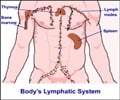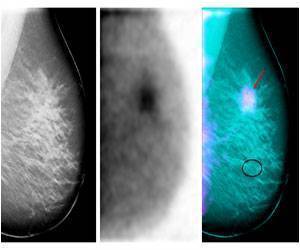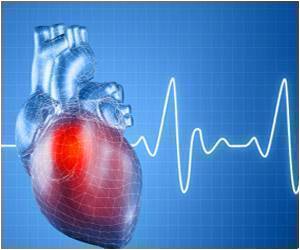Administration of an ACE inhibitor can limit the damage caused to heart and lungs by radiotherapy treatment of tumours in the chest region, say researchers.

The lung is a particularly complex and sensitive organ and strategies for protecting it from radiotherapy damage, apart from limiting the dose given and, therefore, the efficacy of the treatment, are few. Presenting the research to the 2nd Forum of the European Society for Radiotherapy and Oncology (ESTRO) today (Sunday), Dr Sonja Van der Veen, MSc, from the University Medical Centre, Groningen, The Netherlands, said that she had set out with colleagues to see whether the use of an ACE inhibitor could protect against early radiation-induced lung toxicity (RILT). Previous studies had shown that damage to blood vessels can play an important role in the development of RILT [2], so the researchers irradiated the lungs, heart, or heart and lungs of rats and administered the ACE inhibiter captopril immediately after treatment. The rats' lung functions were then measured at two-weekly intervals.
"After eight weeks, when early lung toxicity is usually at its height, we found that captopril improved the rats' heart and lung functions, but we were surprised to find that this only occurred when the heart was included in the irradiation field," said Dr Van der Veen. "This was not due to protection of the lung blood vessels, which were equally damaged with or without captopril. So we investigated further and found that the captopril treatment improved the heart's function and decreased the level of fibrosis in the heart soon after irradiation. So these new findings show that ACE inhibition decreases RILT by reducing direct acute heart damage."
Irradiating the heart leads to the development of fibrosis, which stiffens it, and this in turn leads to problems in the relaxation of the left ventricle. Due to this, blood flow from the lungs into the heart is hindered, and this can cause pulmonary damage. However, after treatment with captopril, the researchers observed an improvement in ventricular relaxation in the irradiated hearts.
Dr Van der Veen and her colleagues are now collaborating with a research group from the Mayo Clinic, Rochester, Minnesota (USA), in order to design a randomised clinical trial where patients who are treated with radiation to the thoracic area including the heart will be treated with either an ACE inhibitor or a placebo after irradiation.
Much progress has been made in radiation treatment over recent years, but in breast cancer, for example, most women still receive high doses to the heart, and this is known to increase the risk of heart disease. A recent study [3] has shown that for each Gray (Gy) [4] of radiation, there is a 7.4% increase in the occurrence of a subsequent major coronary event.
Advertisement
Rats were chosen for the study because, unlike mice, they are big enough for researchers to be able to irradiate different part of the lungs and heart. The researchers believe that the way in which ACE inhibition works in both animals and humans is similar.
Advertisement
President of ESTRO, Professor Vincenzo Valentini, a radiation oncologist at the Policlinico Universitario A. Gemelli, Rome, Italy, said: "This study underlines the importance of translational research. The understanding of anti-cancer mechanisms, as well as of protective opportunities discovered in the experimental environment, is of upmost importance in the era of personalised medicine. This research provides further evidence of the importance of testing experimental theories in the clinical environment to the ultimate benefit of patients."
Source-Eurekalert













